Eu não posso acreditar que a minha mae tivesse estado comigo para dois meses, Father reflects to himself as he chews on his calulu. Actually, it has been more like a month and a half, but Father has been busy with work at the hospital. There’s only one public hospital in the entire city of São Tomé, a little far from where he lives, and he oversees more than forty patients in the course of an hour. It’s only in the hours of the evening after he comes home that he has time to savour the taste of the fish his wife makes, sit by the television beside his mother, and chat with her, making her feel young again by sharing the stories of his childhood. How the hours pass, with Father telling long stories about the things he did with his brothers in the coastal town of Vila Malanza, such as how they would cheat each other at football or how they’d spend hours hiking around the crags alongside the ocean without telling any of the adults, just to feel the fresh saltiness of the breeze, the uninterrupted humid smell of the green groves.
A piece of spinach is stuck in between Father’s teeth. He tries to suck it out from the back of his throat, and when that doesn’t work he tries to push it out with his tongue. He pricks at it with his nails, but it refuses to come out. Father finishes his meal and attends to his hygiene in the mirror of the guest bathroom. The spinach is wedged in between his front two teeth like a flag.
As he is taking care of it, Father senses something.
Does my mother have something to say to me?
14 February, 2024
« You know, it is a lot of work to deal with your mother. »
« I know already. »
« Artur, listen to me. It’s a lot of work. »
« I have to go to the hospital. You stay all day at home. What else can we do? »
« Artur, literally look at me. Don’t look at the phone. Look at your wife. »
Father was busy reading some text messages from the electric company, but he looked away, towards his wife, who had extended both of her arms towards him. They were full of red scratches and purple bruises.
« It is a lot of work to put your mother on the toilet. I am a frail woman. I am also almost seventy. Yesterday, I almost slipped on the water from the bath and could have hit my head. »
« We will get someone to help you at the house. »
« That is not all. Your mother scratches at me and hits me. Look at how she has marked me. It is like she is a kitten. »
« That is because she doesn’t remember who you are. She thinks you are a stranger, and she is defending herself. »
« Artur, this is all easy to say. You have to listen to me. It is a lot of work to be at home alone like this, dealing every day with your mother. »
« Deolinda, don’t worry. It will get better as you get used to it. »
Mother scoffed.
« That is easy for you to say given how little you are in the house. »
Father scoffed as well, almost mocking Mother’s response.
« I am hard at work, paying the bills for this family. »
« I know. » Mother said. She breathed in and out, measuredly, and folded her arms to herself. « And I appreciate your work. »
Mother didn’t say anything else. She looked like she was observing the atmosphere of the room, then left it, to go back to her housework. Father was relieved to see the conversation was over, and he went back to reading the messages about the power shortages.
But a part of him knew that Mother wasn’t saying something that she really had to get off of her chest, and that part of his mind couldn’t stop wondering what it was.
12 March, 2024
It’s rare for Father to intuit these things. Unlike Mother, who seems to think every offhand sound in the background involves them, Father tends to not notice anything unless it occurs in his direct line of vision, or unless it involves his work. Father is still picking at the spinach between his teeth while looking at himself in the mirror. His skin has always been a light caramel, but he has noticed that he is getting dark freckles on his cheeks. His skin is also darkening in patches. He hopes that it isn’t cancer.
But the feeling doesn’t go away. Father has a strong sense that his mother has something important to say. The thought resounds in his head, though he doesn’t know for what reason. It’s not easy for him to talk to his mother. Each time they speak, there’s a stutter and a pause—and she usually ends up not saying a single thing. She swallows her words, her eyes go blank, and she returns to staring mindlessly at the wall.
Father doesn’t understand why it would be any different today.
7 March, 2024
Alda Alves squirmed in the wheelchair. It was seven in the evening, but it felt like it was seven in the morning, or seven in the evening from the day before. The same serial was playing on the television. The colours flashed in the background. The smell of frying fish filled the house.
Suddenly her body shook. There was no control to the shaking. It would not stop no matter what. It was because she wanted to move but she didn’t move. She wanted to stand but she wasn’t standing. She wanted to adjust her body in the wheelchair but the most she could do was vibrate to herself.
She clutched her earring. Why did she have an earring on? She did not put it in her ear. Her eyes were blinking and blinking and blinking. She wanted to try to take it off, but it was a struggle to get her arm to raise up to her ear, and so she gave up.
There was a book next to her. The Bible. The pages used to feel so warm against her fingers. She wanted to grab it but how. Her finger shook. The book is so big. How would she make her hand fit around it?
She rubbed the edges of the pages with her fingers and then slapped over the book. It fell onto the floor.
Deolinda rushed into the room.
« Mamãe, what are you doing? »
Her mother-in-law’s eyes shuddered like a window blind partially closed.
Deolinda picked up the Bible and put it back in its place on the table.
« Do you want me to read some of the stories from the book? »
At the moment at which she asked she got no response, so Deolinda returned to her work in the kitchen.
But in a few hours, Alda Alves reached for the pages again, trying her hardest to pick up the book.
12 March, 2024
Father leaves the bathroom and returns to the green living room, with its eggshell-blue paintings of the ocean on the walls. Theirs is one of the nicer houses in the city. They live in a two-storey cottage right by the ocean, alongside a small wooden port used by the fishermen in the early hours of the morning. The houses are painted yellow and red and pink and blue. Their house is one of the green ones—green outside, green inside, and particularly green when the sun sets and cascades its light across the living room.
Just on the other side of the hall, the matriarch of the family, Alda Alves, is sitting in her wheelchair. She is in a pink nightgown, and she’s resting her neck on the back of the wall. Father remembers how effortlessly his mother used to lug entire fire logs on the top of her head, and yet now she can no longer support her head with the strength of her own muscles. Drool is dribbling out of her mouth, forming a thin liquid thread down to her arm. Father finds the small blue towel they use to wipe away her sweat and cleans it off.
« And how was your day, mamãe? » Father says, in the childishly excited tone he uses with his senile patients. « Como foi? » he repeats, two or three times.
His mother doesn’t make an effort to respond, which makes Father wonder if his earlier thoughts were founded on nothing. He sighs. As he said to himself earlier, he is not the intuitive one in his family, and he has long made peace with it. He wonders if he should watch the serial that Mother has put on, one of those random ones from Brasil where not a single character looks remotely African. Honestly, these are the things Mother would watch, not Alda Alves, who used to complain to Father that the things people consume in Africa should be made by Africans.
« Oi, Deolinda, » Father calls out. « Where have you put the remote? » Mother is too far away to hear Father, so he shouts louder. « And why is the program on this? » Something about him having to say it angers him. « You should be putting on things my mother will watch. This is not the time for you to enjoy your shows. »
Perhaps it is the tone he used, but Father suddenly hears a lamenting groan. He turns back to his mother. Suddenly her neck has stiffened out, and her head is straight. The expression on her face is one of fright.
« Oi, mamãe, calm down. Everything is good. Everything is good, I promise. Do you remember me? Do you remember who is talking? Who is this? Who is talking right now? »
Father puts on his excited face, trying to look how he looked when he was a little boy, raptured by everything in the world.
« A…ahh »
« Artur. »
« Ahhh…ahh »
« Artur. »
« Artur. »
« Exatamente. Very good, mamãe, ótimo… »
Normally, the conversation would end here. Father would try to make his mother say his name over and over again, and once she got the hang of it, he would ask her to say the names of his brothers, or his father. At that point his mother would get exhausted. Her eyes would lose their glisten, all concentration would be lost, and she’d return to staring at the nothingness on the other side of the wall.
Only now his mother’s eyes don’t break concentration. They suddenly look the way they looked all those decades ago, back when Alda Alves lived in the fishing settlement of Vila Malanza, full of life and urgency and hunger for more.
31 May, 1962
There was once a day when Alda Alves looked through her open window, at the clothes on the drying line as she was drying the dishes, and said to Artur, « Do you know why we live the way we do? »
Artur was busy eating ice cream, but he shook his head, not knowing what his mother was referring to.
Alda smiled. The sun’s light imprinted the shadows of the palm trees over her face.
« There is no reason for why we live the way we do. We are born where we are. We are from where we are from. But we have all of the power to be more than that. »
Alda put her hand up towards the sky. She clenched it to make the shape of a fist, and she put it right in the place of the ever-shining sun, blocking its light. Her hair coils were slicked against her face like angry serpents. Her pinkish-purple chapped lips cracked against the breeze as she spoke.
« That is the reason why God has put us on this Earth. To surpass the challenge of the life we have been given. To prove that we are far more than what we have been put on this earth for. »
12 March, 2024
« Eu estou sozinho » Alda Alves says.
I am lonely.
The suddenness of her confession shocks Father. He utters without thinking, « What? »
« Sozinho » Alda Alves says, and then she says, quite lucidly, with the most piercing sadness in her eyes, « I am alone. » She says it over and over again.
A tear falls from Father’s eye and traverses over his face. A hotness warms his cheeks.
« My mother, you don’t have to be lonely. My mother, I am here for you now. My mother, I will always be here for you. I know I lived so far away from you for a long time, and it was hard to keep in touch, but I did it all for my family and for us. I’ve always done everything for you even when I have not been around. So, don’t be lonely, my mother. I love you. »
Father holds his mother’s hand. He tries to clasp the top of it with his other, as if that will somehow help to convey the authenticity of his words. He hopes that his mother has heard him in this sudden moment of clarity. He wants to believe more than anything that this is a sign that his mother is still inside of this body, that her dementia is starting to wane, even if just in this moment, and that a part of her consciousness will grace his presence more often.
However, instead of acknowledging her son, Alda Alves utters again and again, « Sozinho, sozinho…soz…so… »
Her voice cracks, her tone changes, her facial expression loses tension.
Her eyes are vacant once more.
She stops staring with that sadness, and faces blankly at the empty green painted on the wall.

 The resident Doctor’s body was found last week on Friday with multiple injuries and signs of
The resident Doctor’s body was found last week on Friday with multiple injuries and signs of  Dr. Kathula urged that “hospitals need to implement robust security measures and increase surveillance cameras and security personnel and control the access to sensitive areas. Establishing clear protocols for handling violent incidents and ensuring all staff are trained to manage such situations, and also they should offer training to Doctors and hospital staff in conflict resolution and communication skills to handle these types of situations more effectively. Also, there should be public awareness and education of the people to enhance respectful interactions with healthcare professionals,” he said.
Dr. Kathula urged that “hospitals need to implement robust security measures and increase surveillance cameras and security personnel and control the access to sensitive areas. Establishing clear protocols for handling violent incidents and ensuring all staff are trained to manage such situations, and also they should offer training to Doctors and hospital staff in conflict resolution and communication skills to handle these types of situations more effectively. Also, there should be public awareness and education of the people to enhance respectful interactions with healthcare professionals,” he said. As the President-Elect, the multi-talented professional said, “I understand that AAPI needs experienced leadership from someone who has been in AAPI leadership for over two decades. I know what works and what does not. This is a major contribution that I can make this year in guiding the leadership to progress in the right direction efficiently and effectively.”
As the President-Elect, the multi-talented professional said, “I understand that AAPI needs experienced leadership from someone who has been in AAPI leadership for over two decades. I know what works and what does not. This is a major contribution that I can make this year in guiding the leadership to progress in the right direction efficiently and effectively.” clinical professor of medicine at Wright State University-Boonshoft School of Medicine, Dayton, Ohio. Dr. Kathula is a Diplomate of the American Board of Lifestyle Medicine. He has authored several papers and articles in medical journals and is in the process of writing a book, describing his journey as an immigrant physician. “For the past 22 years, I’ve been proudly serving as a Hematologist and Oncologist in the Dayton community, considering it my home:”
clinical professor of medicine at Wright State University-Boonshoft School of Medicine, Dayton, Ohio. Dr. Kathula is a Diplomate of the American Board of Lifestyle Medicine. He has authored several papers and articles in medical journals and is in the process of writing a book, describing his journey as an immigrant physician. “For the past 22 years, I’ve been proudly serving as a Hematologist and Oncologist in the Dayton community, considering it my home:” The growing influence of physicians of Indian heritage is evident, as increasingly physicians of Indian origin hold critical positions in healthcare, academic, research, and administrative positions across the nation. Physicians of Indian origin are known for their great achievements, and their contributions to their motherland, India, and their adopted land, the United States in significant ways to the transformation of Indo-US relations.
The growing influence of physicians of Indian heritage is evident, as increasingly physicians of Indian origin hold critical positions in healthcare, academic, research, and administrative positions across the nation. Physicians of Indian origin are known for their great achievements, and their contributions to their motherland, India, and their adopted land, the United States in significant ways to the transformation of Indo-US relations. In an official communication sent out to the members of the AAPI’s General Boy, Dr. Kathula stated: “According to the current bylaws (Article VI) the current Executive Committee (EC) term is one year which ended on July 8, 2024. The new Executive Committee’s term started on July 9, 2024.”
In an official communication sent out to the members of the AAPI’s General Boy, Dr. Kathula stated: “According to the current bylaws (Article VI) the current Executive Committee (EC) term is one year which ended on July 8, 2024. The new Executive Committee’s term started on July 9, 2024.”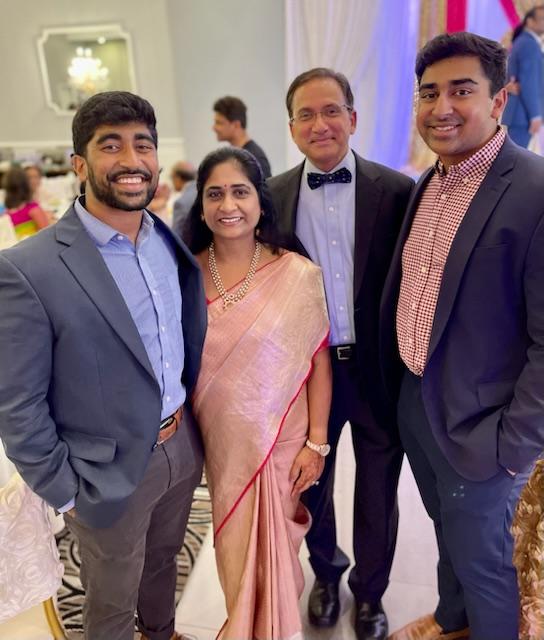 Dr. Kathula, who graduated from Siddhartha Medical College, Vijayawada, Andhra Pradesh, India in 1992 is a clinical professor of medicine at Wright State University-Boonshoft School of Medicine, Dayton, Ohio. Dr. Kathula is a Diplomate of the American Board of Lifestyle Medicine. He has authored several papers and articles in medical journals and is in the process of writing a book, describing his journey as an immigrant physician. “For the past 22 years, I’ve been proudly serving as a Hematologist and Oncologist in the Dayton community, considering it my home:”
Dr. Kathula, who graduated from Siddhartha Medical College, Vijayawada, Andhra Pradesh, India in 1992 is a clinical professor of medicine at Wright State University-Boonshoft School of Medicine, Dayton, Ohio. Dr. Kathula is a Diplomate of the American Board of Lifestyle Medicine. He has authored several papers and articles in medical journals and is in the process of writing a book, describing his journey as an immigrant physician. “For the past 22 years, I’ve been proudly serving as a Hematologist and Oncologist in the Dayton community, considering it my home:”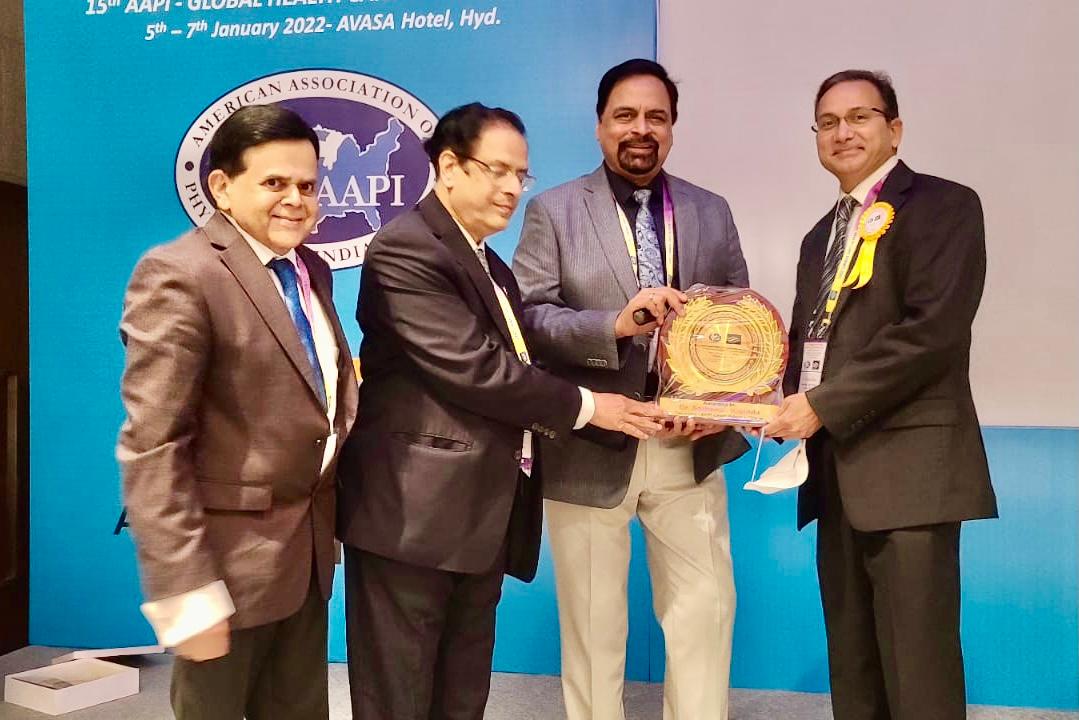 Recalling his long association with AAPI, which he has come to call his 2nd family, Dr. Kathula says, “My first experience with medical conventions occurred at the AAPI annual convention in 1995, graced by then-President Bill Clinton. Inspired, I formally joined AAPI in 2002, though my active involvement commenced in 2009, assuming the role of the governing body member of AAPI. Later on, I won all four national elections I contested, supported by esteemed AAPI members.”
Recalling his long association with AAPI, which he has come to call his 2nd family, Dr. Kathula says, “My first experience with medical conventions occurred at the AAPI annual convention in 1995, graced by then-President Bill Clinton. Inspired, I formally joined AAPI in 2002, though my active involvement commenced in 2009, assuming the role of the governing body member of AAPI. Later on, I won all four national elections I contested, supported by esteemed AAPI members.”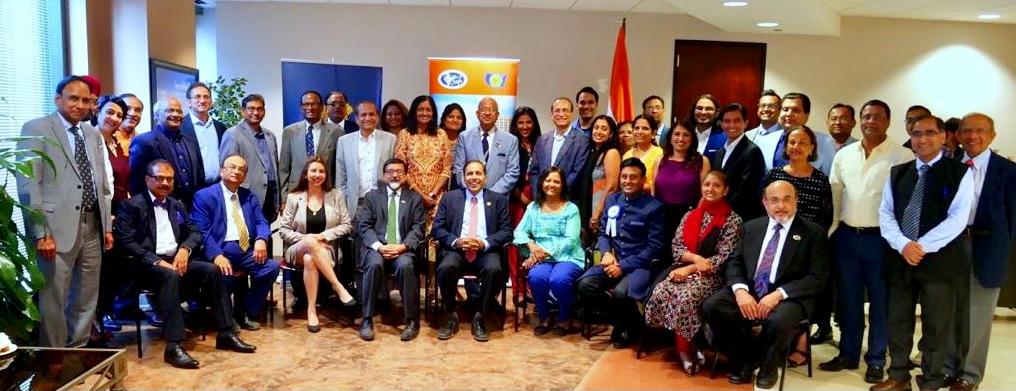 In his inaugural note, Dr. Kathula assured all AAPI members and all physicians of Indian origin that “I will sincerely work for the betterment of our beloved organization, AAPI.”
In his inaugural note, Dr. Kathula assured all AAPI members and all physicians of Indian origin that “I will sincerely work for the betterment of our beloved organization, AAPI.”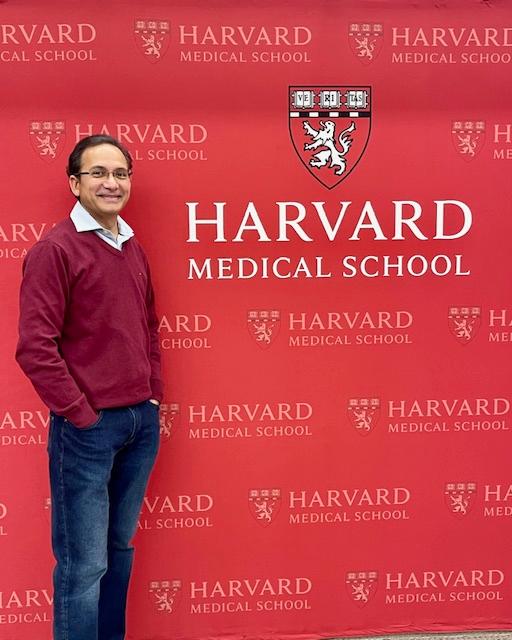 Dr. Kathula has laid out his vision for AAPI on his website:
Dr. Kathula has laid out his vision for AAPI on his website: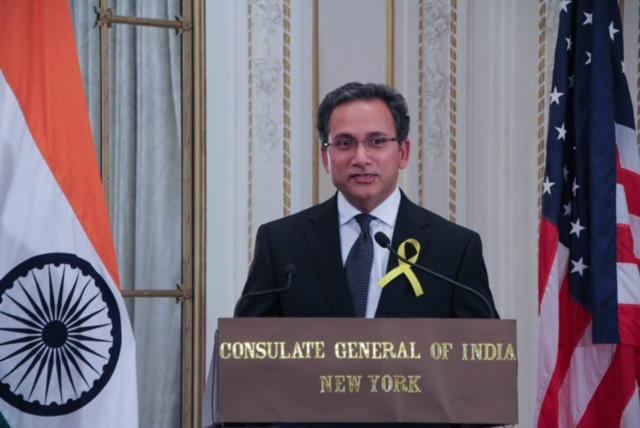 He has been actively involved in community service locally, nationally, and internationally for the last two decades. Dr. Kathula was instrumental in raising funds for the construction of the Om Shanti Hindu Cultural Center in Dayton. He is also the President and Founding Member of the Association of Indian Physicians from Ohio. He has served on several non-profit boards, dedicating his time, skills, and resources for the greater good of the larger community. Dr. Kathula served on the Board of Trustees of the Leukemia and Lymphoma Society (Dayton chapter) and has raised more than $200,000 for some of its initiatives. The society conferred on him the Man of the Year Award in 2010. Dr. Kathula received Hind Rattan Award in 2010, given by the NRI Welfare Society of India for his outstanding contributions. He was awarded ‘Man of the Year – 2018’ by the Leukemia and Lymphoma Society.
He has been actively involved in community service locally, nationally, and internationally for the last two decades. Dr. Kathula was instrumental in raising funds for the construction of the Om Shanti Hindu Cultural Center in Dayton. He is also the President and Founding Member of the Association of Indian Physicians from Ohio. He has served on several non-profit boards, dedicating his time, skills, and resources for the greater good of the larger community. Dr. Kathula served on the Board of Trustees of the Leukemia and Lymphoma Society (Dayton chapter) and has raised more than $200,000 for some of its initiatives. The society conferred on him the Man of the Year Award in 2010. Dr. Kathula received Hind Rattan Award in 2010, given by the NRI Welfare Society of India for his outstanding contributions. He was awarded ‘Man of the Year – 2018’ by the Leukemia and Lymphoma Society.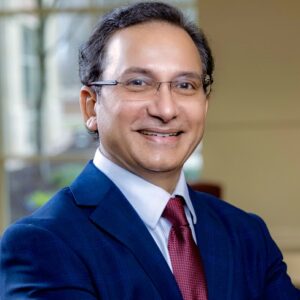 Dr. Kathula gives credit to several mentors who have helped shape his outlook on life. “My life’s journey has been enriched by countless mentors and inspirations from all walks of life, each contributing to my personal and professional growth.”
Dr. Kathula gives credit to several mentors who have helped shape his outlook on life. “My life’s journey has been enriched by countless mentors and inspirations from all walks of life, each contributing to my personal and professional growth.” Continuing these ancient Indian principles and focusing on the assessment and treatment of the eyes, Sreedhareeyam was taken to the next level through the dynamic leadership of Dr. NPP Namboothiri, who was trained under the guidance of Vaidyan Trivikraman Namboodiri and other eminent ophthalmology practitioners in Kerala. After his passing away in 2021, Dr. Narayanan Namboothiri has been entrusted with the role of Medical Director and has been leading this prestigious Eye Hospital to newer heights.
Continuing these ancient Indian principles and focusing on the assessment and treatment of the eyes, Sreedhareeyam was taken to the next level through the dynamic leadership of Dr. NPP Namboothiri, who was trained under the guidance of Vaidyan Trivikraman Namboodiri and other eminent ophthalmology practitioners in Kerala. After his passing away in 2021, Dr. Narayanan Namboothiri has been entrusted with the role of Medical Director and has been leading this prestigious Eye Hospital to newer heights. As per Dr. Namboothiri, there are about 40 to 45 Doctors in addition to hundreds of supporting staff here working at Sreedhareeyam and its branches across India and abroad, who are led and trained by some senior Doctors, who are also assisting in the treatment of patients here and other branches.
As per Dr. Namboothiri, there are about 40 to 45 Doctors in addition to hundreds of supporting staff here working at Sreedhareeyam and its branches across India and abroad, who are led and trained by some senior Doctors, who are also assisting in the treatment of patients here and other branches. Among the thousands of successful cases, Dr. Narayanan recalls how Sreedhareeyam could help restore the vision for Rose Mary Odinga, the daughter of Raila Odinga, former Prime Minister of Kenya in 2023. After being diagnosed with a brain tumor in 2017, Odinga’s daughter had undergone surgery in Nairobi. But in the post-operative period, Rosemary had complained of severe loss of eyesight. She travelled to India in 2019 and underwent treatment at Sreedhareeyam, which helped her vision to restore.
Among the thousands of successful cases, Dr. Narayanan recalls how Sreedhareeyam could help restore the vision for Rose Mary Odinga, the daughter of Raila Odinga, former Prime Minister of Kenya in 2023. After being diagnosed with a brain tumor in 2017, Odinga’s daughter had undergone surgery in Nairobi. But in the post-operative period, Rosemary had complained of severe loss of eyesight. She travelled to India in 2019 and underwent treatment at Sreedhareeyam, which helped her vision to restore. Similar stories by people from abroad and in India are not uncommon. Ralitsa Dutch, a 37-year-old patient from the Netherlands shared about her experience at Sreedhareeyam and Ayurveda this way: “I experienced optic neuritis, an inflammation of the optic nerve in relation to a Multiple Sclerosis (MS) relapse. Since then, my right eye has been heavily impaired. In 2013, when allopathic medicine deemed my case as “hopeless,” I started looking at alternative treatments and got to know about Ayurveda. The decision to come to India and undergo Ayurvedic treatment turned out to be life changing. After a three month stay at a specialized Ayurvedic MS center, my right eye “woke up” for the first time. After three consecutive stays, my MS stabilized, and I have not had any relapses ever since.”
Similar stories by people from abroad and in India are not uncommon. Ralitsa Dutch, a 37-year-old patient from the Netherlands shared about her experience at Sreedhareeyam and Ayurveda this way: “I experienced optic neuritis, an inflammation of the optic nerve in relation to a Multiple Sclerosis (MS) relapse. Since then, my right eye has been heavily impaired. In 2013, when allopathic medicine deemed my case as “hopeless,” I started looking at alternative treatments and got to know about Ayurveda. The decision to come to India and undergo Ayurvedic treatment turned out to be life changing. After a three month stay at a specialized Ayurvedic MS center, my right eye “woke up” for the first time. After three consecutive stays, my MS stabilized, and I have not had any relapses ever since.” Dr. Namboothiri thanked the Modi government in India, saying “It is very helpful that the Modi Government promotes Ayurveda. The government is doing many things, and he is a very good ambassador for Ayurveda as well as Yoga. An All-India Institute of Ayurveda has been started in Delhi with centers in Gujarat and Goa. The creation of Ayush Ministry is a big boost for the ancient medical traditions of Inda.”
Dr. Namboothiri thanked the Modi government in India, saying “It is very helpful that the Modi Government promotes Ayurveda. The government is doing many things, and he is a very good ambassador for Ayurveda as well as Yoga. An All-India Institute of Ayurveda has been started in Delhi with centers in Gujarat and Goa. The creation of Ayush Ministry is a big boost for the ancient medical traditions of Inda.”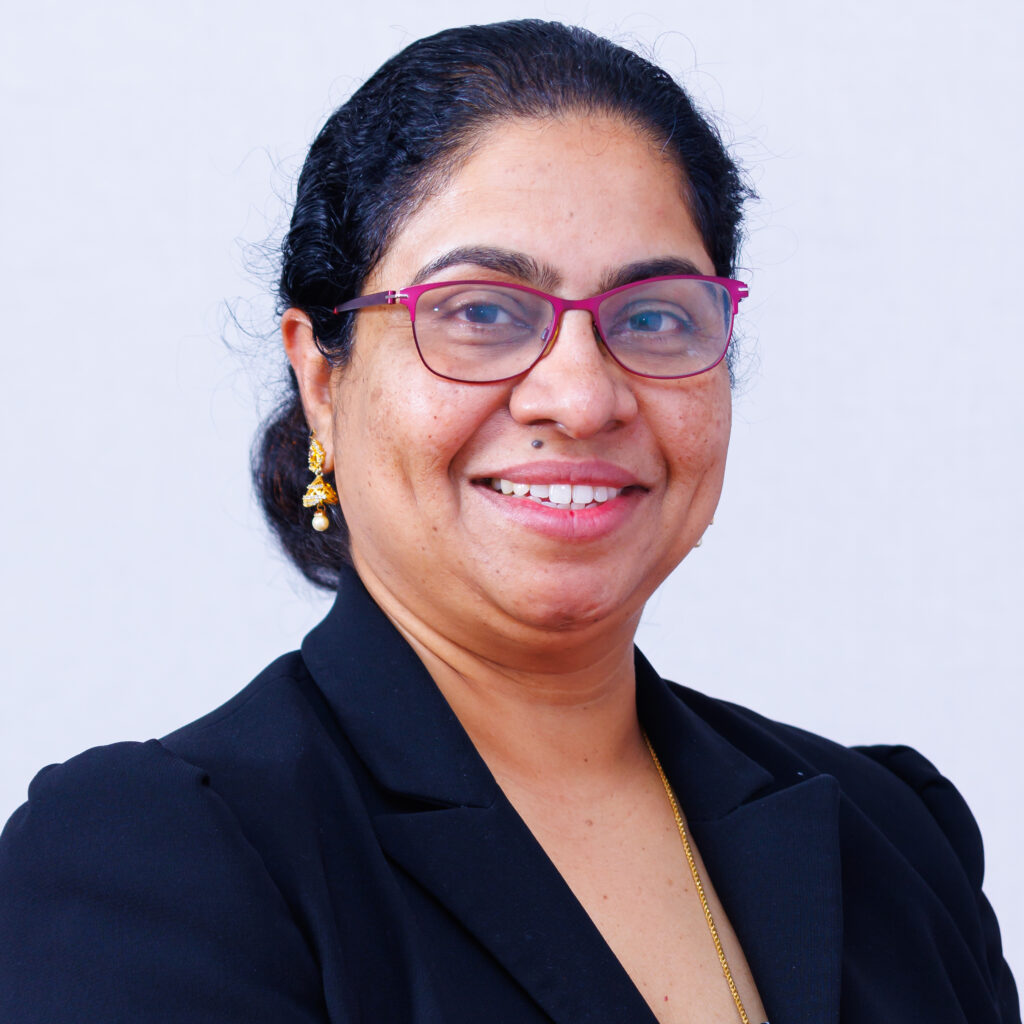 NAINA stands as the representing voice of the tens of thousands among the 4.7 million nurses in the healthcare arena. The primary goal of NAINA is to provide service to and bring all the nurses and nursing students of Indian origin under one umbrella. With twenty chapters across the nation, NAINA stands as the sole national organization of Indian nurses with thousands of nurses enjoying the benefits of its membership. In the mainstream, NAINA is closely associated with American Nurses Association, CGFNS International, National Coalition of Ethnic Minority Nurses Organization, and National Council of State Board of Nursing. As we witness Indian Americans all across the life spectrum in the country, the Indian American nurses have already established their presence in healthcare. You will Indian nurses at bedside, in outpatient clinics, nursing leadership, nursing education, hospital administration, university faculty, and research. They are ambitious; they uphold a vision of high-quality healthcare. They believe that higher education can equip them with advanced knowledge, critical thinking skills, upward career opportunities, professional respect, and healthcare progress.” Suja Thomas, the president of NAINA emphasized. Suja, a nursing administrator and an adjunct professor, is also in the governing team of CGFNS International. The leadership team of NAINA also represents nursing professionals with expertise from diverse fields.
NAINA stands as the representing voice of the tens of thousands among the 4.7 million nurses in the healthcare arena. The primary goal of NAINA is to provide service to and bring all the nurses and nursing students of Indian origin under one umbrella. With twenty chapters across the nation, NAINA stands as the sole national organization of Indian nurses with thousands of nurses enjoying the benefits of its membership. In the mainstream, NAINA is closely associated with American Nurses Association, CGFNS International, National Coalition of Ethnic Minority Nurses Organization, and National Council of State Board of Nursing. As we witness Indian Americans all across the life spectrum in the country, the Indian American nurses have already established their presence in healthcare. You will Indian nurses at bedside, in outpatient clinics, nursing leadership, nursing education, hospital administration, university faculty, and research. They are ambitious; they uphold a vision of high-quality healthcare. They believe that higher education can equip them with advanced knowledge, critical thinking skills, upward career opportunities, professional respect, and healthcare progress.” Suja Thomas, the president of NAINA emphasized. Suja, a nursing administrator and an adjunct professor, is also in the governing team of CGFNS International. The leadership team of NAINA also represents nursing professionals with expertise from diverse fields. same time and will bring out new research outcomes and evidence- based practice initiatives that could empower and embolden nurses with knowledge and skills to bring back to their home practices. Attendees of each session will get continuing education credits that could be used for maintaining their specialty certifications and help nurses to achieve promotional initiatives like Clinical Ladder. Tara Shajan, a nursing director at Health and Hospitals Corporation of New York who is the National Convenor and the treasure of NAINA pointed at the networking opportunities that NAINA conference provides to the attendees. “Besides the valuable continuing education credits, you get opportunities to network with bedside nurses from all specialties, scholars, nurse practitioners and educators from California to Main and Florida to Minnesota. You can inspire and get inspired!”
same time and will bring out new research outcomes and evidence- based practice initiatives that could empower and embolden nurses with knowledge and skills to bring back to their home practices. Attendees of each session will get continuing education credits that could be used for maintaining their specialty certifications and help nurses to achieve promotional initiatives like Clinical Ladder. Tara Shajan, a nursing director at Health and Hospitals Corporation of New York who is the National Convenor and the treasure of NAINA pointed at the networking opportunities that NAINA conference provides to the attendees. “Besides the valuable continuing education credits, you get opportunities to network with bedside nurses from all specialties, scholars, nurse practitioners and educators from California to Main and Florida to Minnesota. You can inspire and get inspired!”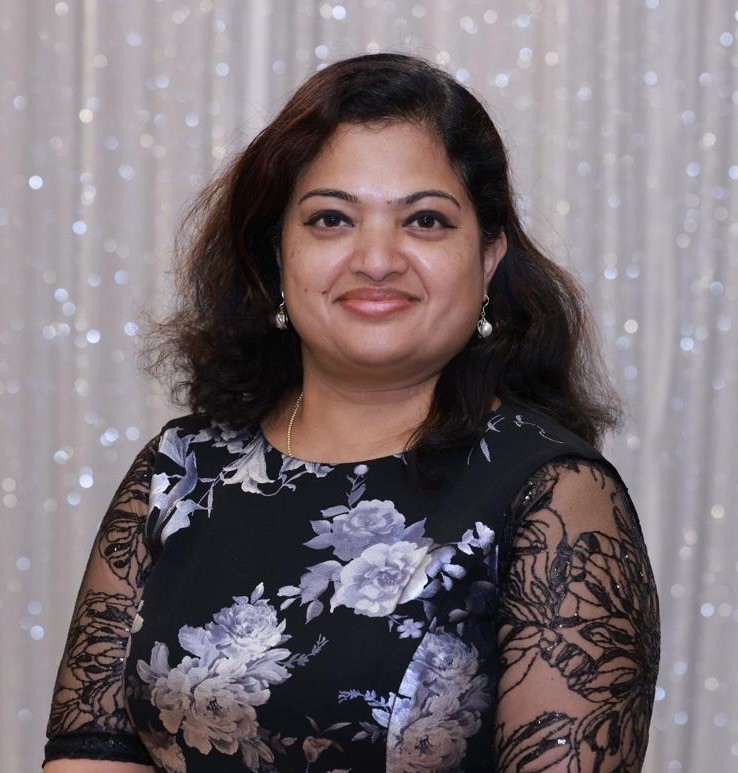 Integrating Research, and Technological Innovation for Enhancing Practice.” Mukul Bhakshi, Chief of Strategy and Governmental Affairs, will be another guest speaker. Dr. Debbie Hatmaker, Chief Nursing Officer of American Nurses Association, and Dr Kelly Foltz-Ramos, director of simulation & innovation and assistant professor at University at Buffalo School of Nursing will be the guest speakers on Saturday, the second day. Dr. Glenda B. Kelman, chair and professor of nursing at Russell Sage College Troy will do the keynote presentation on “Overcoming Imposter Syndrome in the Age of Technological Innovation in Nursing Practice.” The concurrent sessions will follow.
Integrating Research, and Technological Innovation for Enhancing Practice.” Mukul Bhakshi, Chief of Strategy and Governmental Affairs, will be another guest speaker. Dr. Debbie Hatmaker, Chief Nursing Officer of American Nurses Association, and Dr Kelly Foltz-Ramos, director of simulation & innovation and assistant professor at University at Buffalo School of Nursing will be the guest speakers on Saturday, the second day. Dr. Glenda B. Kelman, chair and professor of nursing at Russell Sage College Troy will do the keynote presentation on “Overcoming Imposter Syndrome in the Age of Technological Innovation in Nursing Practice.” The concurrent sessions will follow.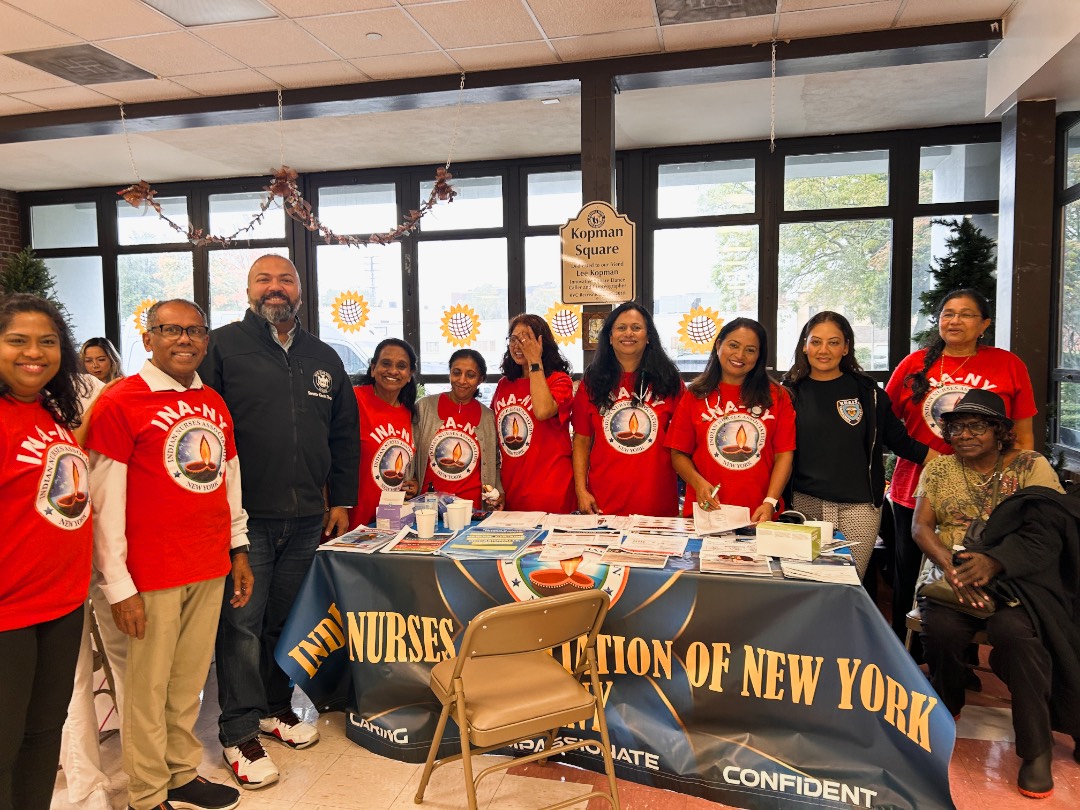 INANY, the organization that stands as the voice of Indian nurses living in New York, has been engaged with New York State Senator to extend healthcare services to the underserved communities in his constituency for the last three years. INANY was also a recipient of a $10,000 grant in partnership with Coalition of Asian American Children and Families to address the surge anti-Asian hate incidents after the COVID-19 pandemic began. The nurses conducted an awareness and bystander intervention training program in senior centers, professional forums, social gatherings and as part of a nursing continuing education conference. The training program comprises various strategies that could be used by a witness or bystander of an anti-Asian hate incident to comfortably intervene to help the victim, without compromising safety or fear. Dr. Anna George, the president of INANY pointed out that the strategies are evidence based and have been adopted by various universities and healthcare organizations such as Northwell Health.
INANY, the organization that stands as the voice of Indian nurses living in New York, has been engaged with New York State Senator to extend healthcare services to the underserved communities in his constituency for the last three years. INANY was also a recipient of a $10,000 grant in partnership with Coalition of Asian American Children and Families to address the surge anti-Asian hate incidents after the COVID-19 pandemic began. The nurses conducted an awareness and bystander intervention training program in senior centers, professional forums, social gatherings and as part of a nursing continuing education conference. The training program comprises various strategies that could be used by a witness or bystander of an anti-Asian hate incident to comfortably intervene to help the victim, without compromising safety or fear. Dr. Anna George, the president of INANY pointed out that the strategies are evidence based and have been adopted by various universities and healthcare organizations such as Northwell Health.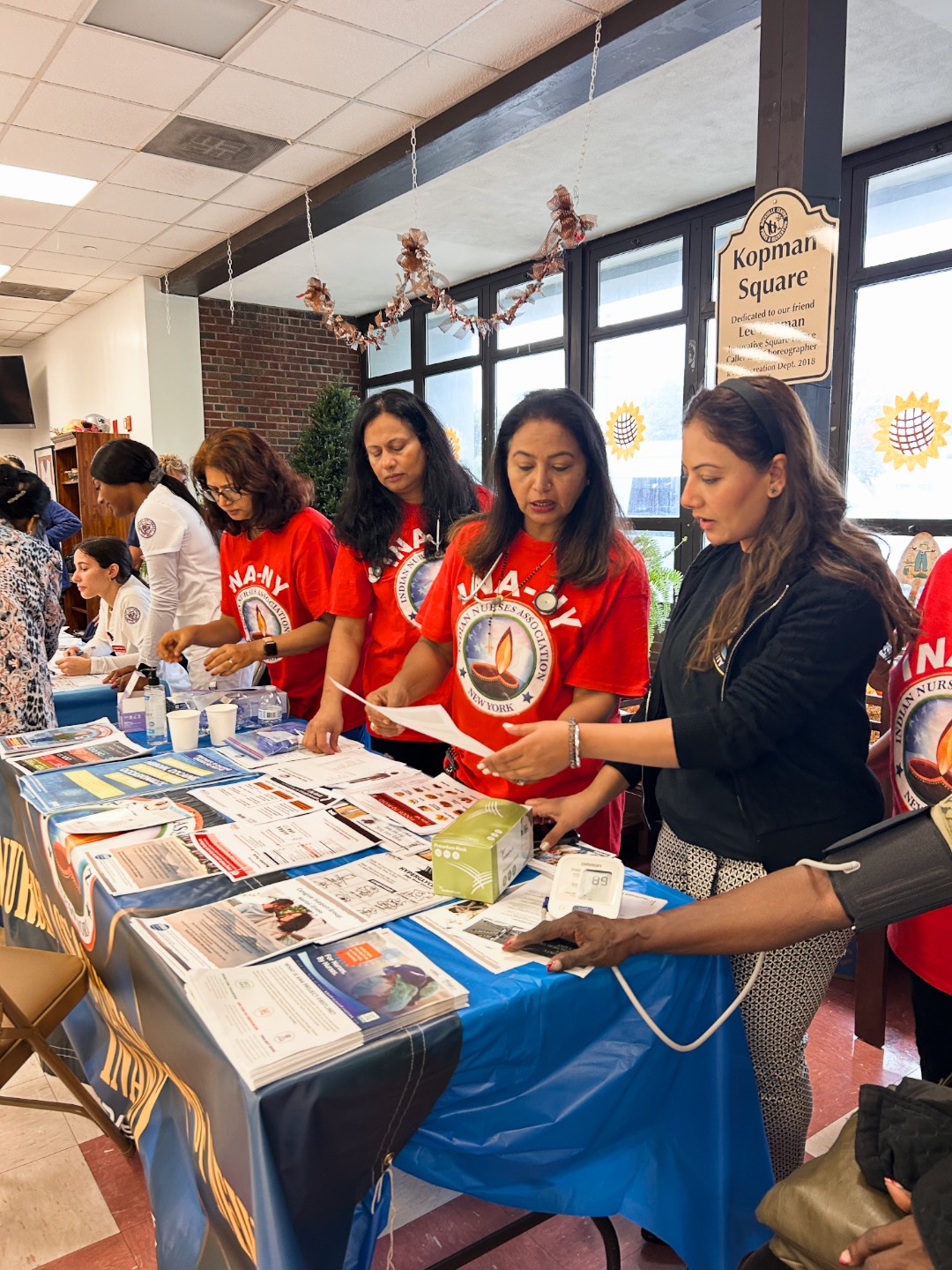 The nurse-volunteers who attended at the Health Expo comprised of nurses working at bedside, nurse practitioners from cardiac catheter lab, and university professors who shared their expertise to educate on reducing risks of life threatening illnesses and conditions. They also did depression screening and talked about need for seeking help or reaching out to resources when someone from own family or others suffers from mental health conditions or substance abuse. They also counselled about the stigma attached to mental illness. Taylor Darling, the New York assembly woman from district 18 who observed services of INANY nurses at the Expo said that she was thoroughly impressed and delighted with what INANY did for the health of the community. She talked about the stressors in nursing related to staff shortage, safe staffing issues, faculty shortage and acuity at work and thanked the nurses for their compassion and altruism. Senator Kevin Thomas expressed his gratitude for the services INANY provided to the people of his district and for the dedication of Indian nurses for what they do every day in healthcare facilities.
The nurse-volunteers who attended at the Health Expo comprised of nurses working at bedside, nurse practitioners from cardiac catheter lab, and university professors who shared their expertise to educate on reducing risks of life threatening illnesses and conditions. They also did depression screening and talked about need for seeking help or reaching out to resources when someone from own family or others suffers from mental health conditions or substance abuse. They also counselled about the stigma attached to mental illness. Taylor Darling, the New York assembly woman from district 18 who observed services of INANY nurses at the Expo said that she was thoroughly impressed and delighted with what INANY did for the health of the community. She talked about the stressors in nursing related to staff shortage, safe staffing issues, faculty shortage and acuity at work and thanked the nurses for their compassion and altruism. Senator Kevin Thomas expressed his gratitude for the services INANY provided to the people of his district and for the dedication of Indian nurses for what they do every day in healthcare facilities.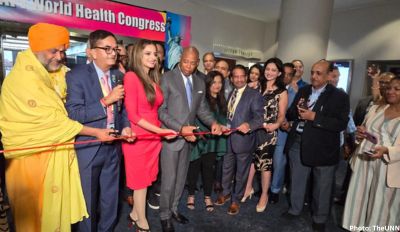 In her keynote address at the gala on Sunday night, Honorable Smriti Irani, a former Cabinet Minister of India and a Bollywood star shared with the over 1,500 AAPI delegates who came from across the United States about the many contributions of India to the world, especially in the healthcare filed and the numerous achievements of the Government of India. She thanked the AAPI members for their great contributions and services to the people of the United States and for their motherland India.
In her keynote address at the gala on Sunday night, Honorable Smriti Irani, a former Cabinet Minister of India and a Bollywood star shared with the over 1,500 AAPI delegates who came from across the United States about the many contributions of India to the world, especially in the healthcare filed and the numerous achievements of the Government of India. She thanked the AAPI members for their great contributions and services to the people of the United States and for their motherland India. New York City Mayor Eric Adams inaugurated the World Health Congress of Physicians with the cutting of the Ribbon and a powerful and memorable inaugural address on July 18th, 2024. In his inaugural address, Adams lauded the contributions of Indian American physicians across the United States, especially during the Covid pandemic. “When you look at the 1000s of physicians across the country, you walk into any hospital, the emergency rooms, especially during COVID, you were present. You were there, and you sacrificed your own health to make sure of the health of this entire country. Your contributions are so rare.”
New York City Mayor Eric Adams inaugurated the World Health Congress of Physicians with the cutting of the Ribbon and a powerful and memorable inaugural address on July 18th, 2024. In his inaugural address, Adams lauded the contributions of Indian American physicians across the United States, especially during the Covid pandemic. “When you look at the 1000s of physicians across the country, you walk into any hospital, the emergency rooms, especially during COVID, you were present. You were there, and you sacrificed your own health to make sure of the health of this entire country. Your contributions are so rare.”

 Some of the major themes at the convention include: Yoga and Meditation practices, a welcome kit with books & self-care supplies, A Personal Reflexology Session, Take home wellness routine, yoga therapy sessions, a workshop on Spiritual well-being, Book talk with Yoga Gurus, including on the science of Yoga & Lifestyle medicine, and several wellness sessions.
Some of the major themes at the convention include: Yoga and Meditation practices, a welcome kit with books & self-care supplies, A Personal Reflexology Session, Take home wellness routine, yoga therapy sessions, a workshop on Spiritual well-being, Book talk with Yoga Gurus, including on the science of Yoga & Lifestyle medicine, and several wellness sessions. Amit Chakrabarty, Vice President of AAPI said, “AAPI’s mission has evolved in the past 42 years. “Today, AAPI is strong representing over 120,000 Indian American physicians, 130 local Chapters, who make up 10% of total physicians in the US and nearly 50% of International Medical Graduates, rooted in every corner of the nation, who serve every 7th patient in the US. We are proud of our achievements and our contributions to the healthcare industry and the millions of people we serve.”
Amit Chakrabarty, Vice President of AAPI said, “AAPI’s mission has evolved in the past 42 years. “Today, AAPI is strong representing over 120,000 Indian American physicians, 130 local Chapters, who make up 10% of total physicians in the US and nearly 50% of International Medical Graduates, rooted in every corner of the nation, who serve every 7th patient in the US. We are proud of our achievements and our contributions to the healthcare industry and the millions of people we serve.” Research and Arts Competition: Poster Competition brought in the best among the aspiring medical students and new graduates from Medical schools. A Panel Discussion on Global Medical Education addressed by the Heads of NBME, FSMB, Intealth, NBME, and NBEMS offered practical tools on navigating the educational systems across India, UK and the United States.
Research and Arts Competition: Poster Competition brought in the best among the aspiring medical students and new graduates from Medical schools. A Panel Discussion on Global Medical Education addressed by the Heads of NBME, FSMB, Intealth, NBME, and NBEMS offered practical tools on navigating the educational systems across India, UK and the United States.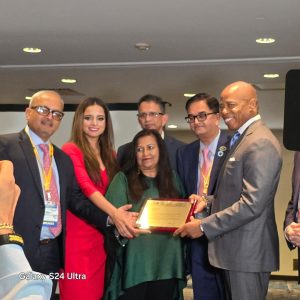 Each day began for the participants with an hour long session on “Harmony and Health: Integrative Yoga” where delegates benefited from hands on sessions teaching and practicing Yoga. Another theme that ran across all days of the Congress was Art Gallery – Oorja: The Feminine Light in Indian Art. Healing Breath that was part of the schedule everyday of the Congress was another way AAPI delegates had an opportunity to ground themselves to the present and start afresh.
Each day began for the participants with an hour long session on “Harmony and Health: Integrative Yoga” where delegates benefited from hands on sessions teaching and practicing Yoga. Another theme that ran across all days of the Congress was Art Gallery – Oorja: The Feminine Light in Indian Art. Healing Breath that was part of the schedule everyday of the Congress was another way AAPI delegates had an opportunity to ground themselves to the present and start afresh. The growing influence of doctors of Indian heritage is evident, as increasingly physicians of Indian origin hold critical positions in the healthcare, academic, research and administrative positions across the nation. With their hard work, dedication, compassion, and skills, they have thus carved an enviable niche in the American medical community. AAPI’s role has come to be recognized as vital among members and among lawmakers.
The growing influence of doctors of Indian heritage is evident, as increasingly physicians of Indian origin hold critical positions in the healthcare, academic, research and administrative positions across the nation. With their hard work, dedication, compassion, and skills, they have thus carved an enviable niche in the American medical community. AAPI’s role has come to be recognized as vital among members and among lawmakers.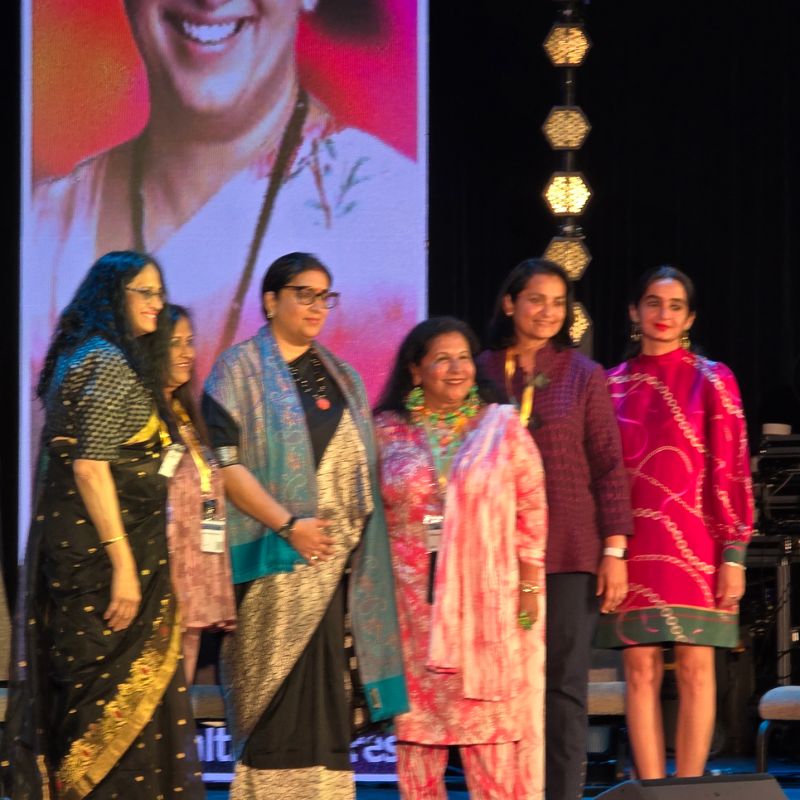 Smiriti Irani highlighted India’s role in bringing women’s leadership to the world forum though its leadership of G 20. She said, “Women don’t have the problem of speaking up, but they have the problem of being heard.” She said, “Women’s values cannot be measured by their success, she needs to be evaluated by what she is.” She paid homage to physicians of Indian origin “for your great contributions” and urged that “AAPI celebrates where every voice of women is celebrated.”
Smiriti Irani highlighted India’s role in bringing women’s leadership to the world forum though its leadership of G 20. She said, “Women don’t have the problem of speaking up, but they have the problem of being heard.” She said, “Women’s values cannot be measured by their success, she needs to be evaluated by what she is.” She paid homage to physicians of Indian origin “for your great contributions” and urged that “AAPI celebrates where every voice of women is celebrated.”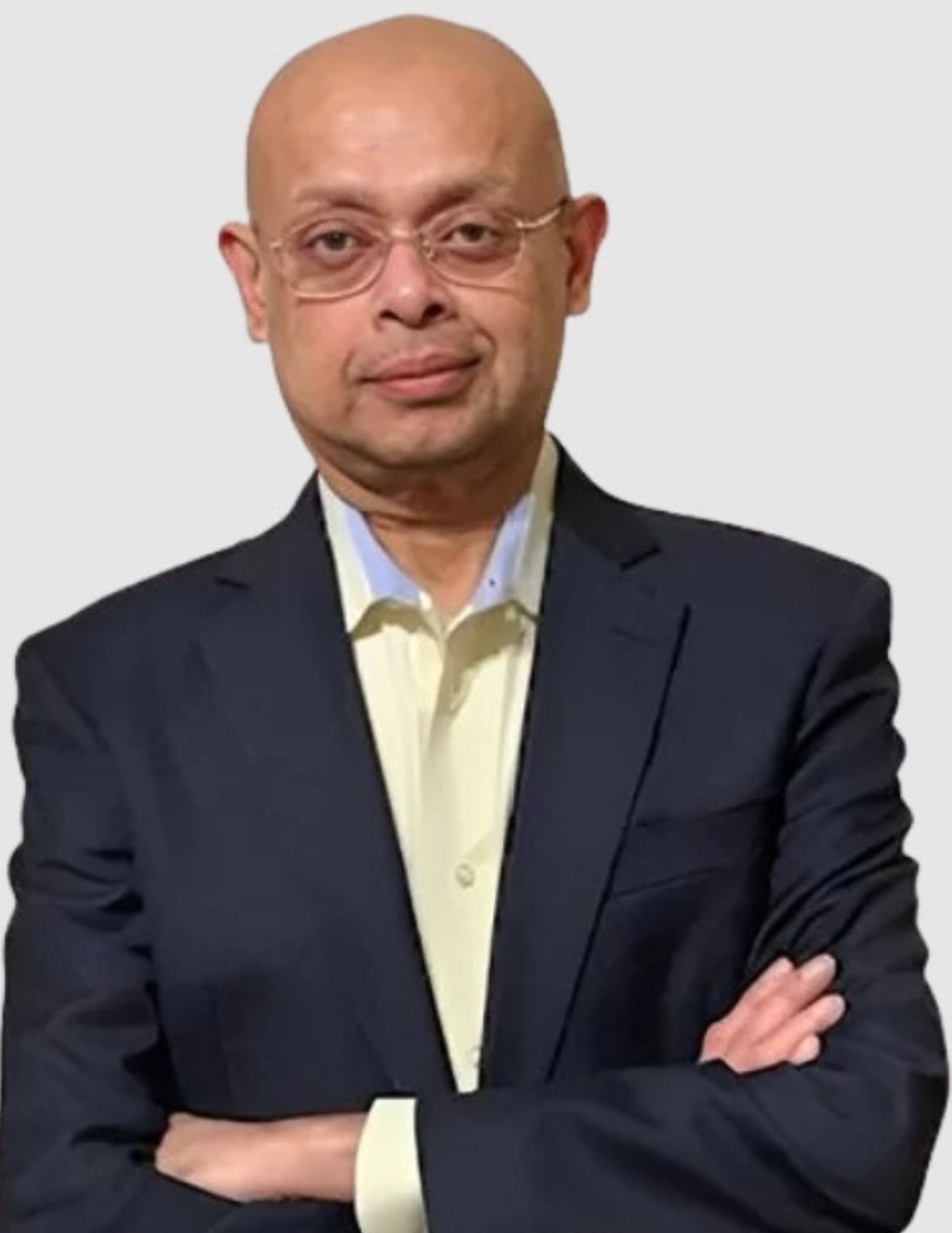 Dr. Indranill Basu-Ray is a Cardiac Electrophysiologist and a Professor of Cardiology and Public health, based in Memphis, Tennessee, USA. He is the Founder Chairman of American Academy for Yoga in Medicine.
Dr. Indranill Basu-Ray is a Cardiac Electrophysiologist and a Professor of Cardiology and Public health, based in Memphis, Tennessee, USA. He is the Founder Chairman of American Academy for Yoga in Medicine.
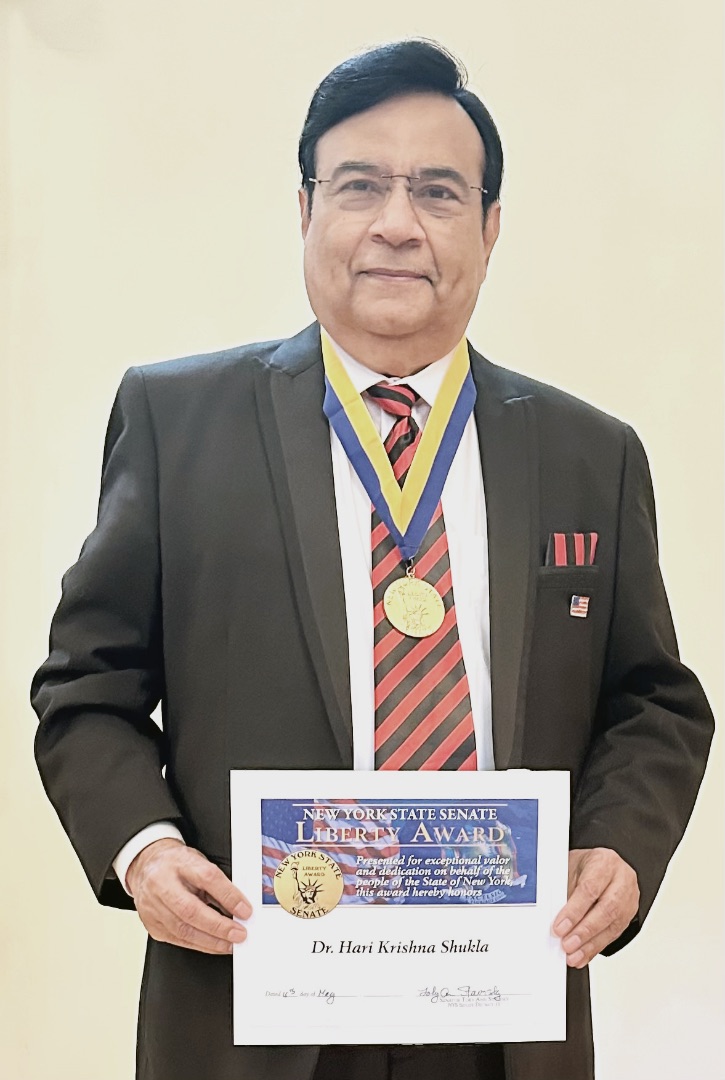 (Albany, NY – May 23, 2024) Dr. Hari Krishna Shukla, practicing Medicine in Flushing, Queens in New York for nearly four decades, serving thousands of young patients, was bestowed with the New York State Liberty Medal during a solemn ceremony on the New York Senate Floor in Albany, NY on May 15th, 2024.
(Albany, NY – May 23, 2024) Dr. Hari Krishna Shukla, practicing Medicine in Flushing, Queens in New York for nearly four decades, serving thousands of young patients, was bestowed with the New York State Liberty Medal during a solemn ceremony on the New York Senate Floor in Albany, NY on May 15th, 2024.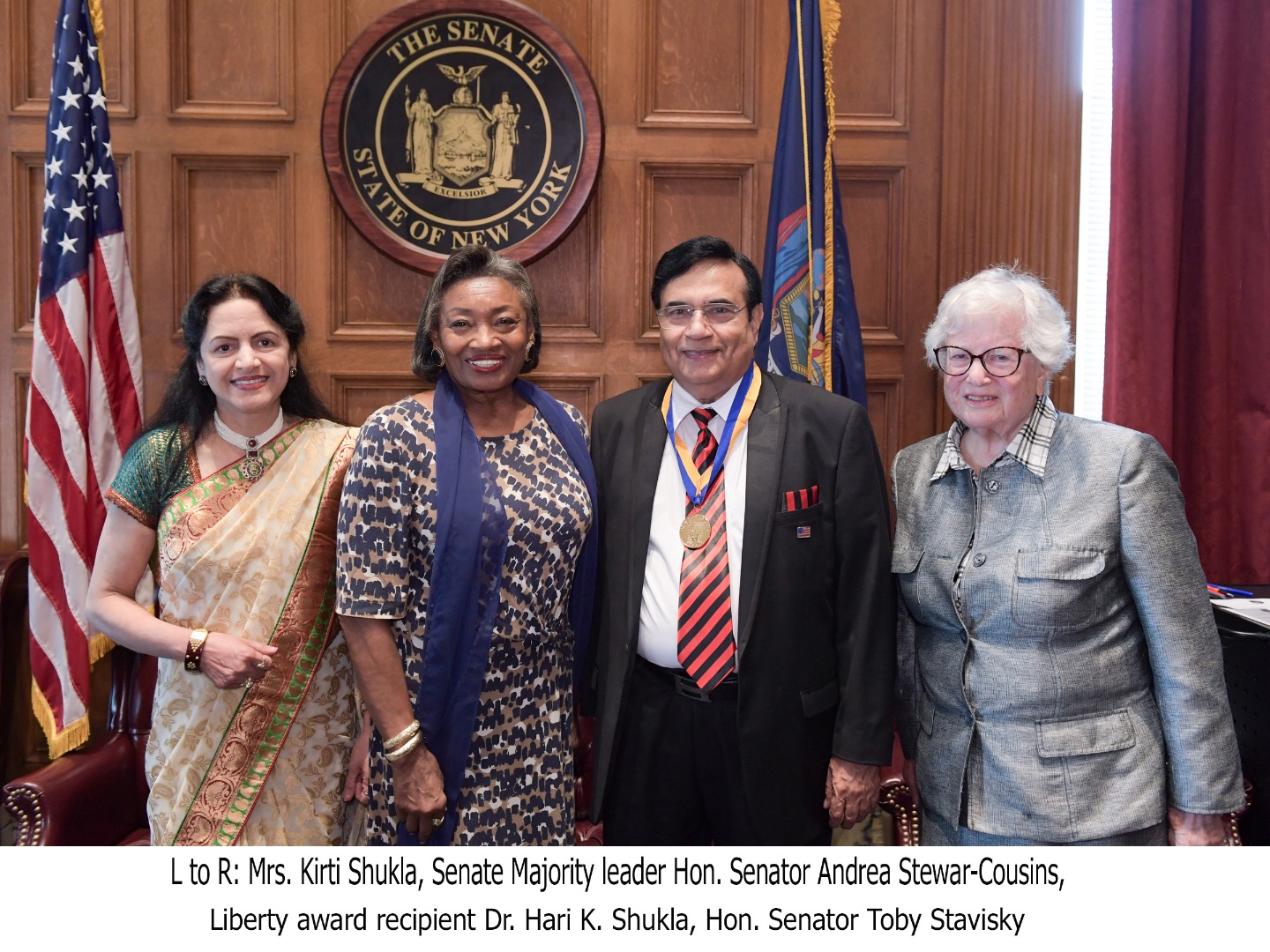
 The New York area is currently experiencing a serious blood shortage. According to the American Red Cross, someone in the United States needs a blood transfusion every two seconds. Studies show that one donation of blood can save at least two lives. Many reasons such as accidents, operations, cancer treatment and blood diseases increase the importance of blood donation. According to New York Blood Center blood donation has never been so low in the last 20 years. The current shortage of blood is due to an unprecedented level of drop in donations.
The New York area is currently experiencing a serious blood shortage. According to the American Red Cross, someone in the United States needs a blood transfusion every two seconds. Studies show that one donation of blood can save at least two lives. Many reasons such as accidents, operations, cancer treatment and blood diseases increase the importance of blood donation. According to New York Blood Center blood donation has never been so low in the last 20 years. The current shortage of blood is due to an unprecedented level of drop in donations.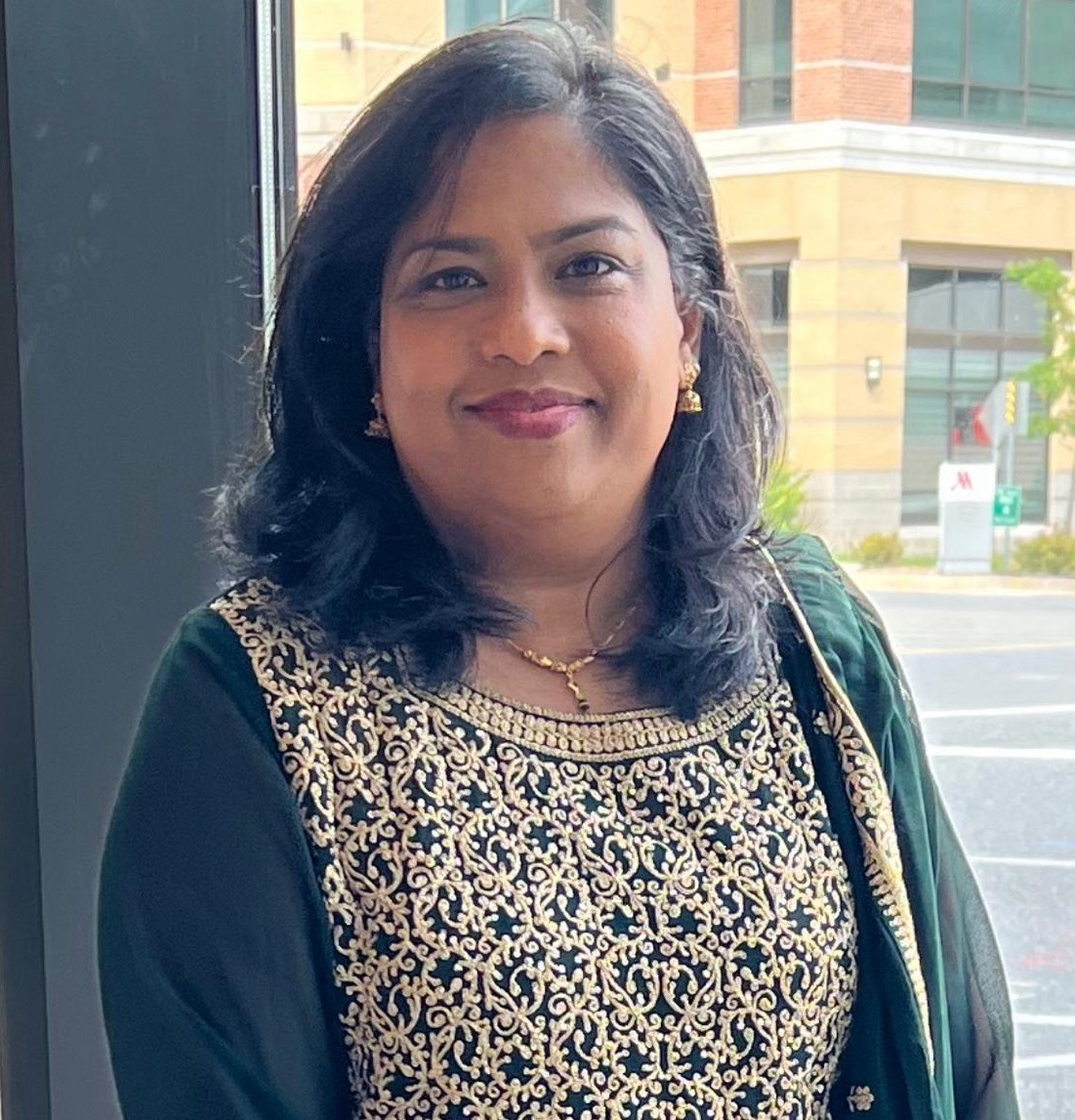 for testing at the doctor’s office, hospital, etc. Some find it difficult to spend time to donate. Yes, it takes about forty-five minutes to an hour for a single donation of blood. But, when we consider spending an hour spent by us saves two or three lives, or the significant difference and impact our donation makes, it takes us to a different level of invaluable gratification.
for testing at the doctor’s office, hospital, etc. Some find it difficult to spend time to donate. Yes, it takes about forty-five minutes to an hour for a single donation of blood. But, when we consider spending an hour spent by us saves two or three lives, or the significant difference and impact our donation makes, it takes us to a different level of invaluable gratification.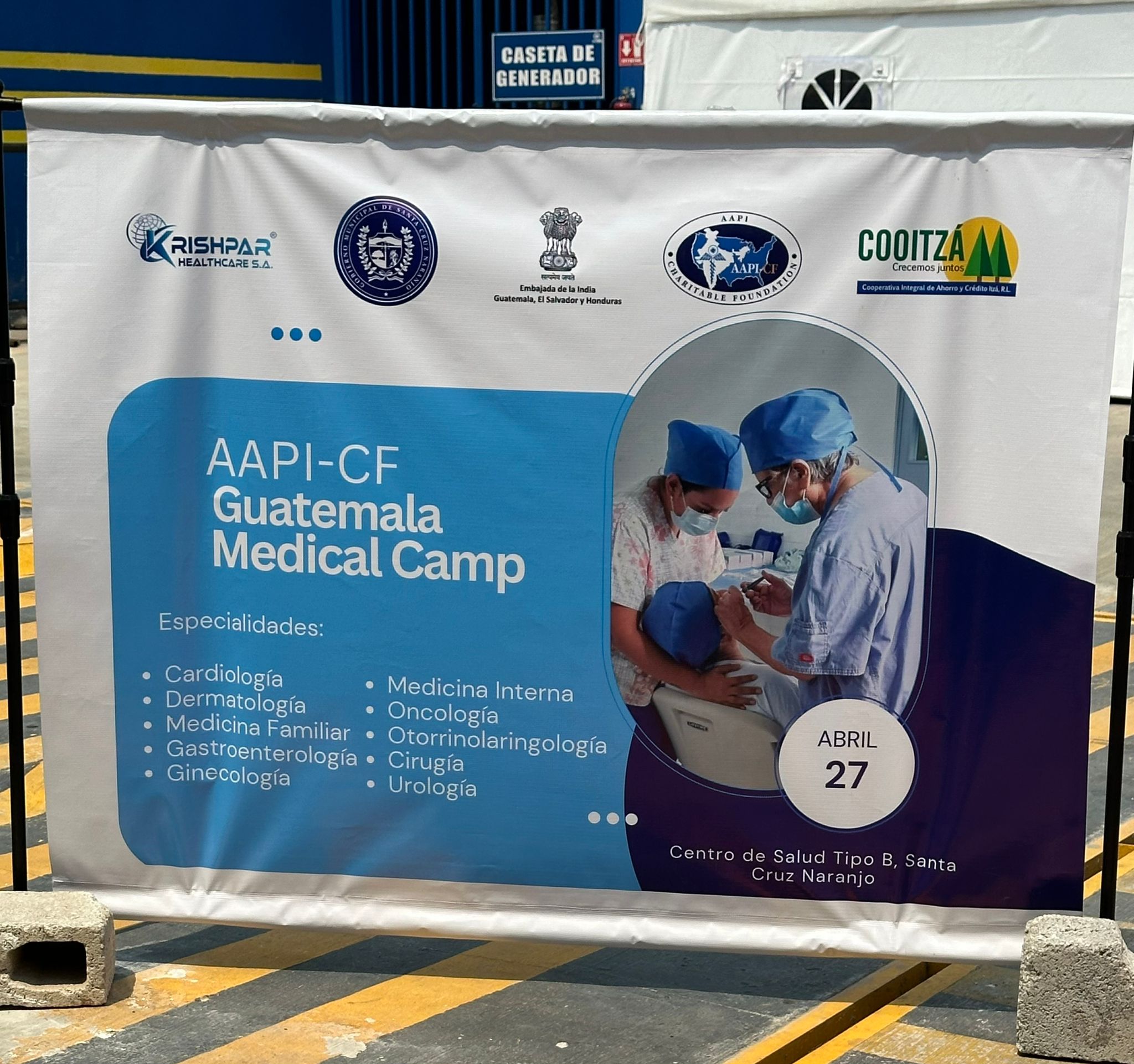
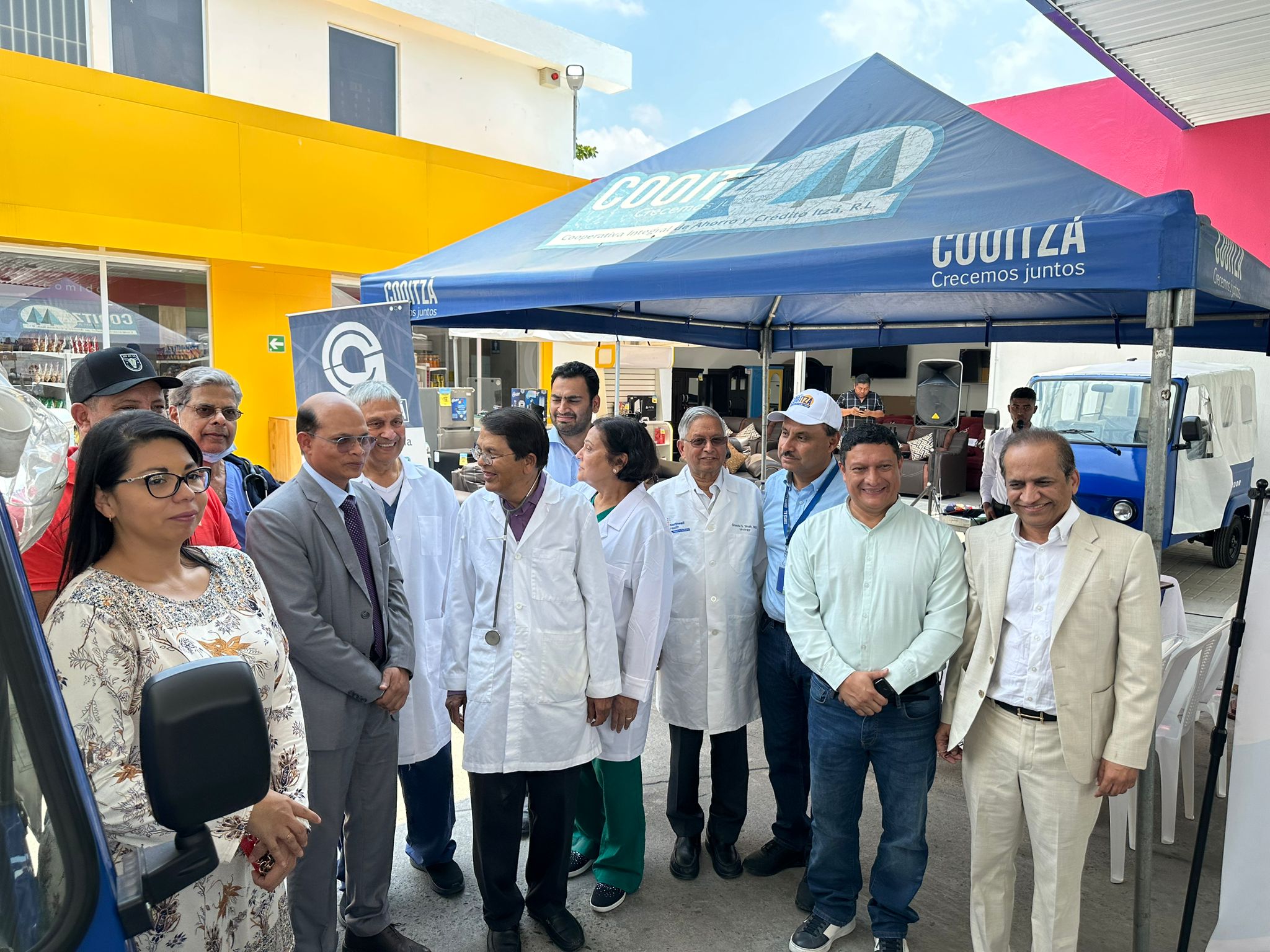 Municipalities of Santa Cruz Naranjo and Santa Rosa Lima. COOITZA, established in 2019 with the objective of the social and economic improvement and focused on the development and improvement of life, through health products, was instrumental in providing invaluable logistical support to arrange the health camp.
Municipalities of Santa Cruz Naranjo and Santa Rosa Lima. COOITZA, established in 2019 with the objective of the social and economic improvement and focused on the development and improvement of life, through health products, was instrumental in providing invaluable logistical support to arrange the health camp.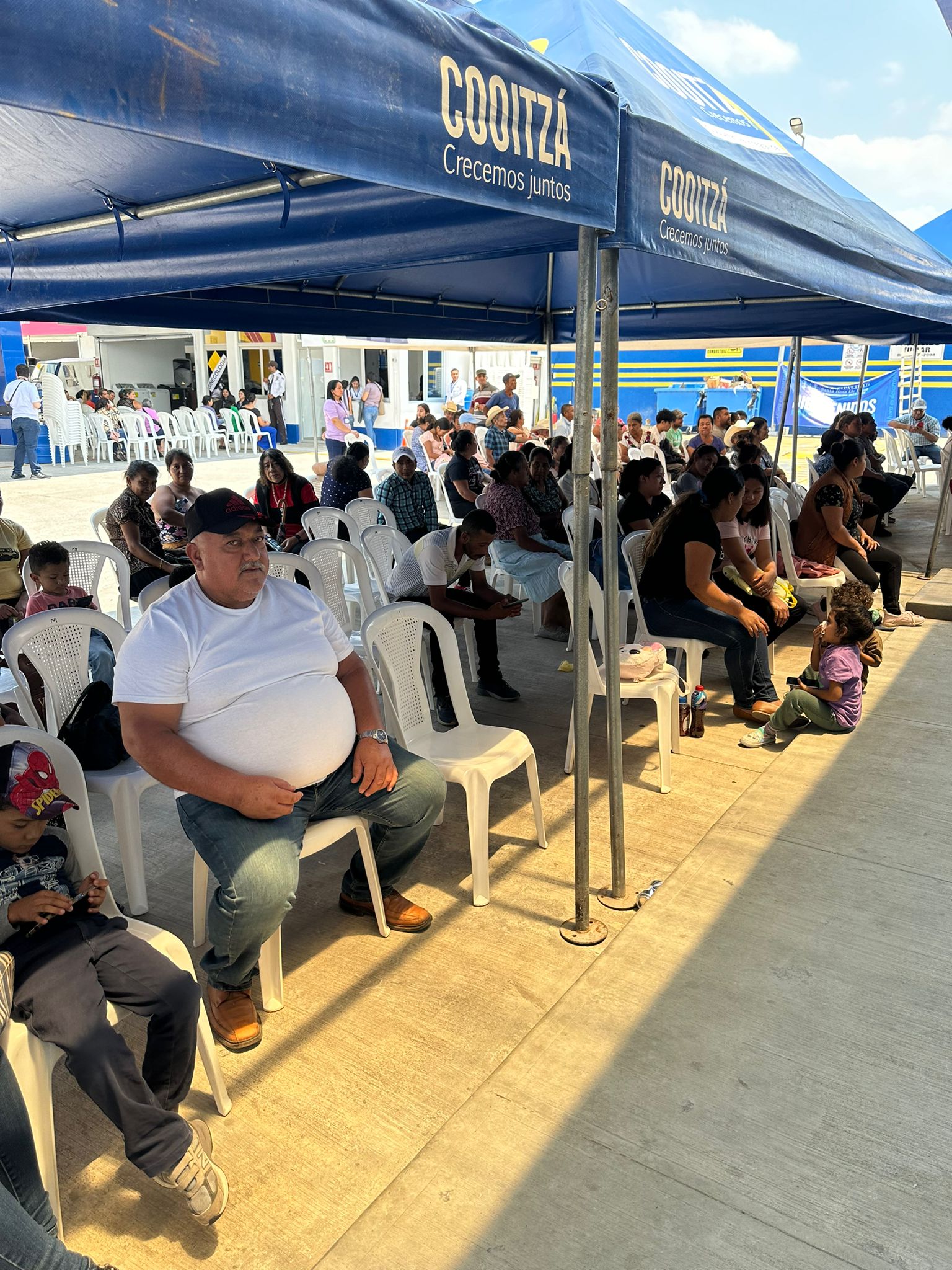

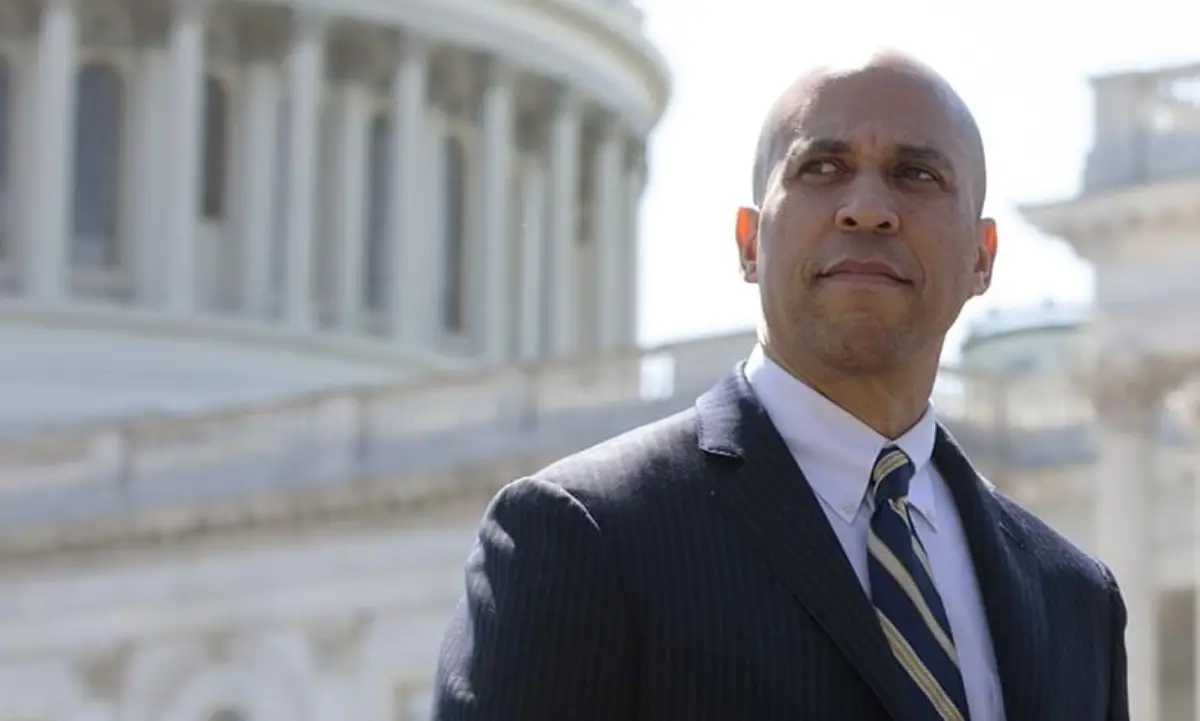 “Despite the heightened prevalence of cardiovascular diseases among South Asians, their risk for heart disease is not widely understood by the medical community,” Senator Booker said while introducing the bill. “This bill is an important step toward promoting critical research on heart disease, and supporting organizations working to improve heart health for at-risk communities across the nation. To reduce the impact of cardiovascular disease nationally, it is essential to invest in research into communities that are disproportionately at risk.”
“Despite the heightened prevalence of cardiovascular diseases among South Asians, their risk for heart disease is not widely understood by the medical community,” Senator Booker said while introducing the bill. “This bill is an important step toward promoting critical research on heart disease, and supporting organizations working to improve heart health for at-risk communities across the nation. To reduce the impact of cardiovascular disease nationally, it is essential to invest in research into communities that are disproportionately at risk.” In short, excessive phone usage is going to do you and your children harm. And what you may be passing off as a lifestyle aberration, may be the symptom of a larger disorder taking shape for e.g. eye strain and lack of concentration may be the trigger point for ADHD (attention deficit hyperactivity disorder) aggravated by years of mobile phone usage.
In short, excessive phone usage is going to do you and your children harm. And what you may be passing off as a lifestyle aberration, may be the symptom of a larger disorder taking shape for e.g. eye strain and lack of concentration may be the trigger point for ADHD (attention deficit hyperactivity disorder) aggravated by years of mobile phone usage.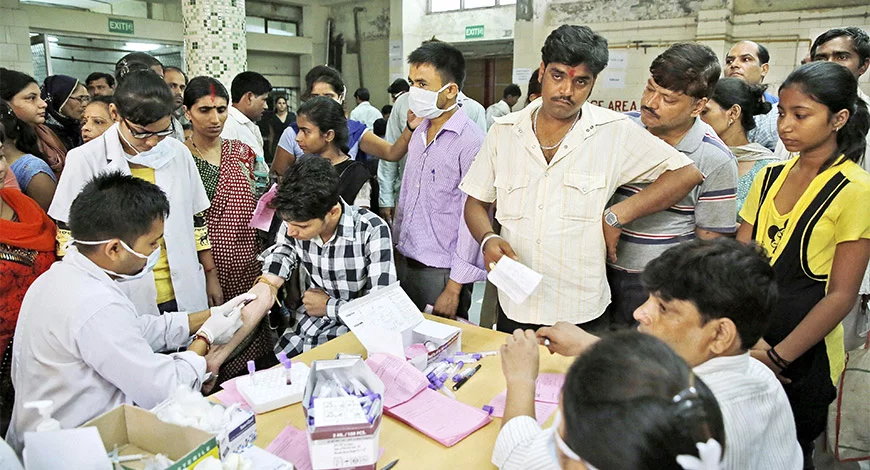 Cureus is an online platform that utilises crowdsourcing to share and promote medical knowledge worldwide, without paywalls.
Cureus is an online platform that utilises crowdsourcing to share and promote medical knowledge worldwide, without paywalls.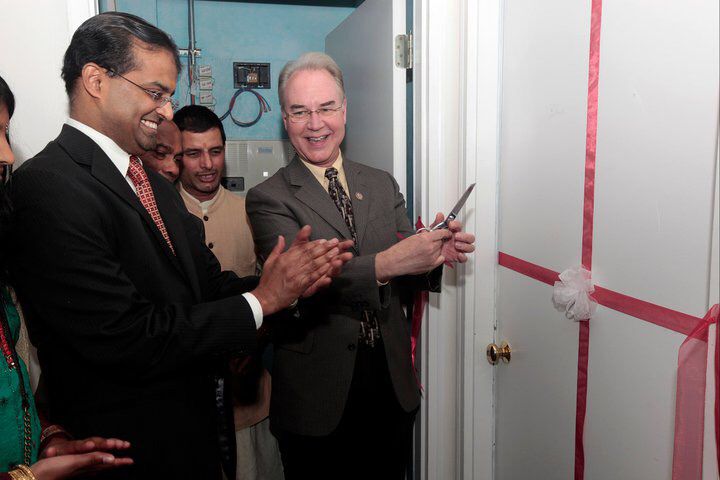 “GAPI Volunteer Clinic in Atlanta recently started working with SEWA volunteers to serve Hispanic and other underserved communities along with Indian and South Asian patients,” says Dr. Gangasani. “At present, the clinic is open first and third Saturdays, and we have plans to open the clinic every Saturday if volunteer physicians are available,” says Dr. Gangasani.
“GAPI Volunteer Clinic in Atlanta recently started working with SEWA volunteers to serve Hispanic and other underserved communities along with Indian and South Asian patients,” says Dr. Gangasani. “At present, the clinic is open first and third Saturdays, and we have plans to open the clinic every Saturday if volunteer physicians are available,” says Dr. Gangasani.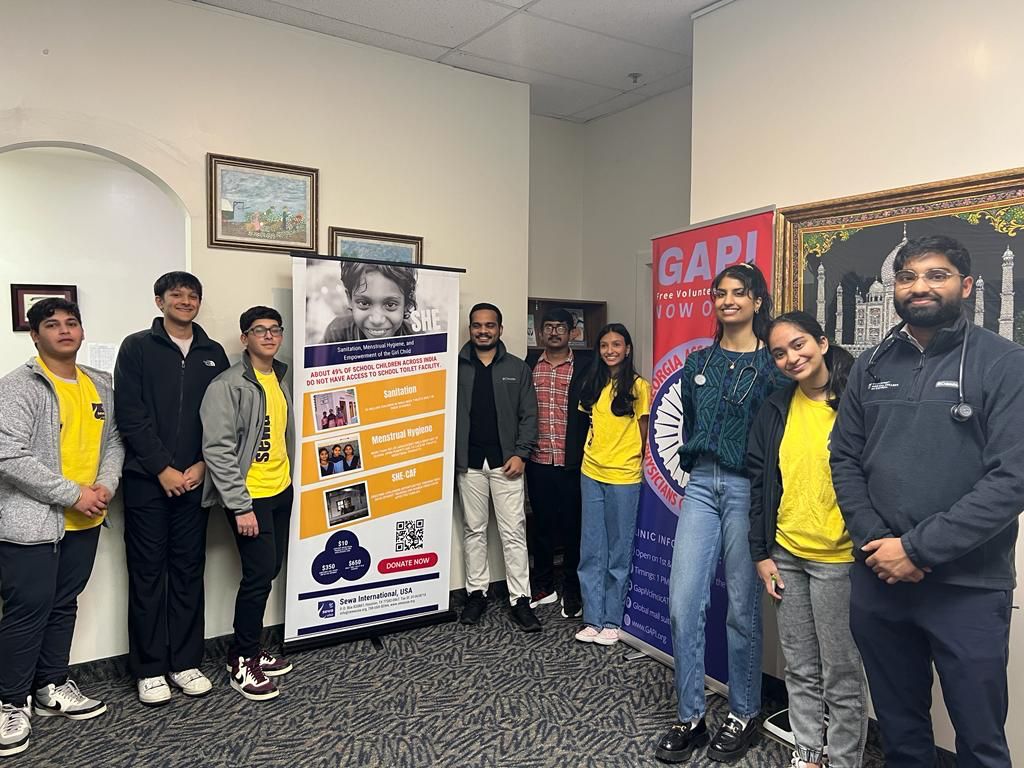 As the director of the GAPI volunteer clinic since 2010, Dr. Gangasani says, “I just wanted to take a moment to express how grateful I am to work at the GAPI clinic. It is truly a blessing to be able to provide medical care to those who may not otherwise have access to it. The gratitude that our patients express when they are seen is truly heartwarming and makes all the hard work worth it. I feel good knowing that I am making a positive impact in the lives of others. Thank you to all the dedicated staff and volunteers who make this possible.”
As the director of the GAPI volunteer clinic since 2010, Dr. Gangasani says, “I just wanted to take a moment to express how grateful I am to work at the GAPI clinic. It is truly a blessing to be able to provide medical care to those who may not otherwise have access to it. The gratitude that our patients express when they are seen is truly heartwarming and makes all the hard work worth it. I feel good knowing that I am making a positive impact in the lives of others. Thank you to all the dedicated staff and volunteers who make this possible.”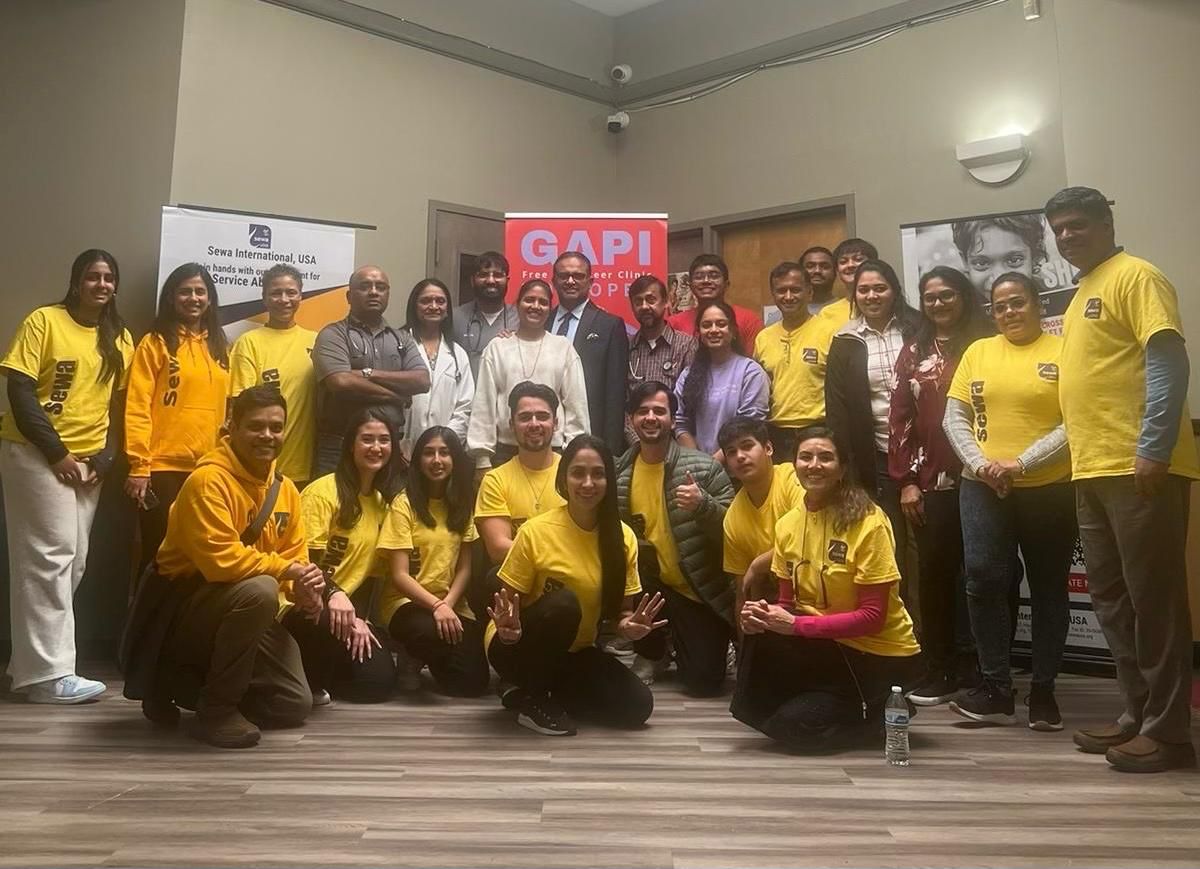 During Covid, the clinic was closed and referred for free telehealth consultations by telehealth companies like Eglobaldoctors who helped many patients during difficult times. Now that the pandemic is behind us, the organizers of the Clini want to expand the services and help more patients who are in need of healthcare.
During Covid, the clinic was closed and referred for free telehealth consultations by telehealth companies like Eglobaldoctors who helped many patients during difficult times. Now that the pandemic is behind us, the organizers of the Clini want to expand the services and help more patients who are in need of healthcare.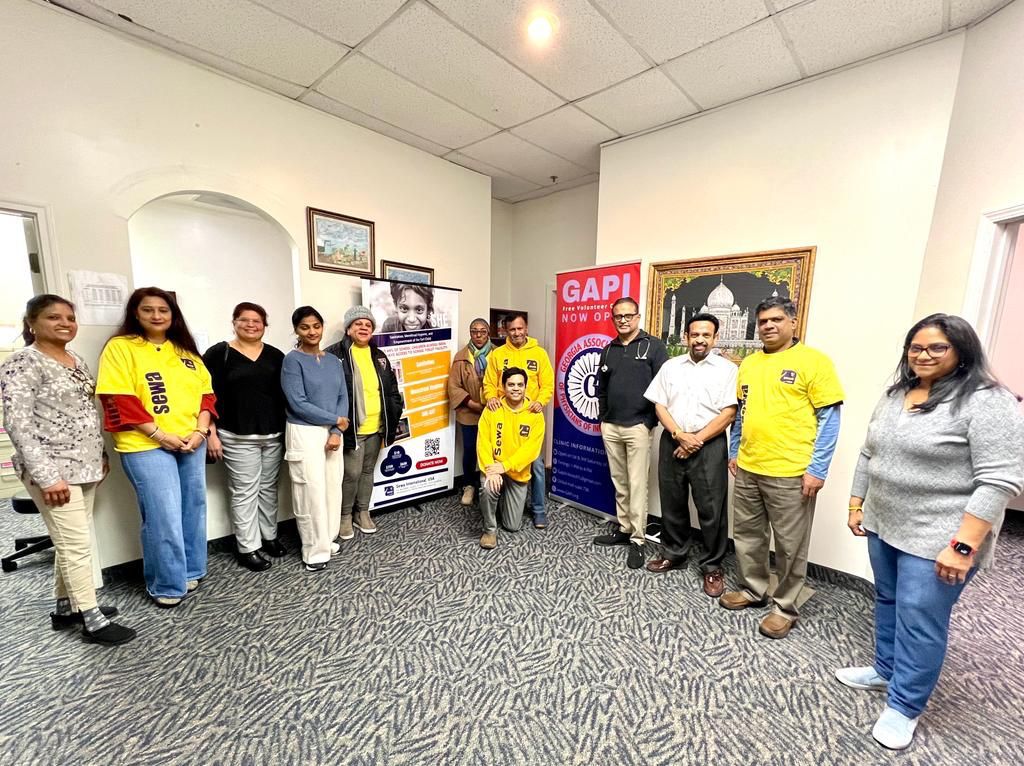 Dr. Gangasani urged GAPI physicians and nurses to step up to the plate and volunteer for a few hours at the clinic. GAPI volunteer free clinic is available at the Global Mall for people with no Insurance and low income. Free Primary care consultation is available for the family. The leaders of the Clinic are working on getting discounted rates at pharmacies.
Dr. Gangasani urged GAPI physicians and nurses to step up to the plate and volunteer for a few hours at the clinic. GAPI volunteer free clinic is available at the Global Mall for people with no Insurance and low income. Free Primary care consultation is available for the family. The leaders of the Clinic are working on getting discounted rates at pharmacies.